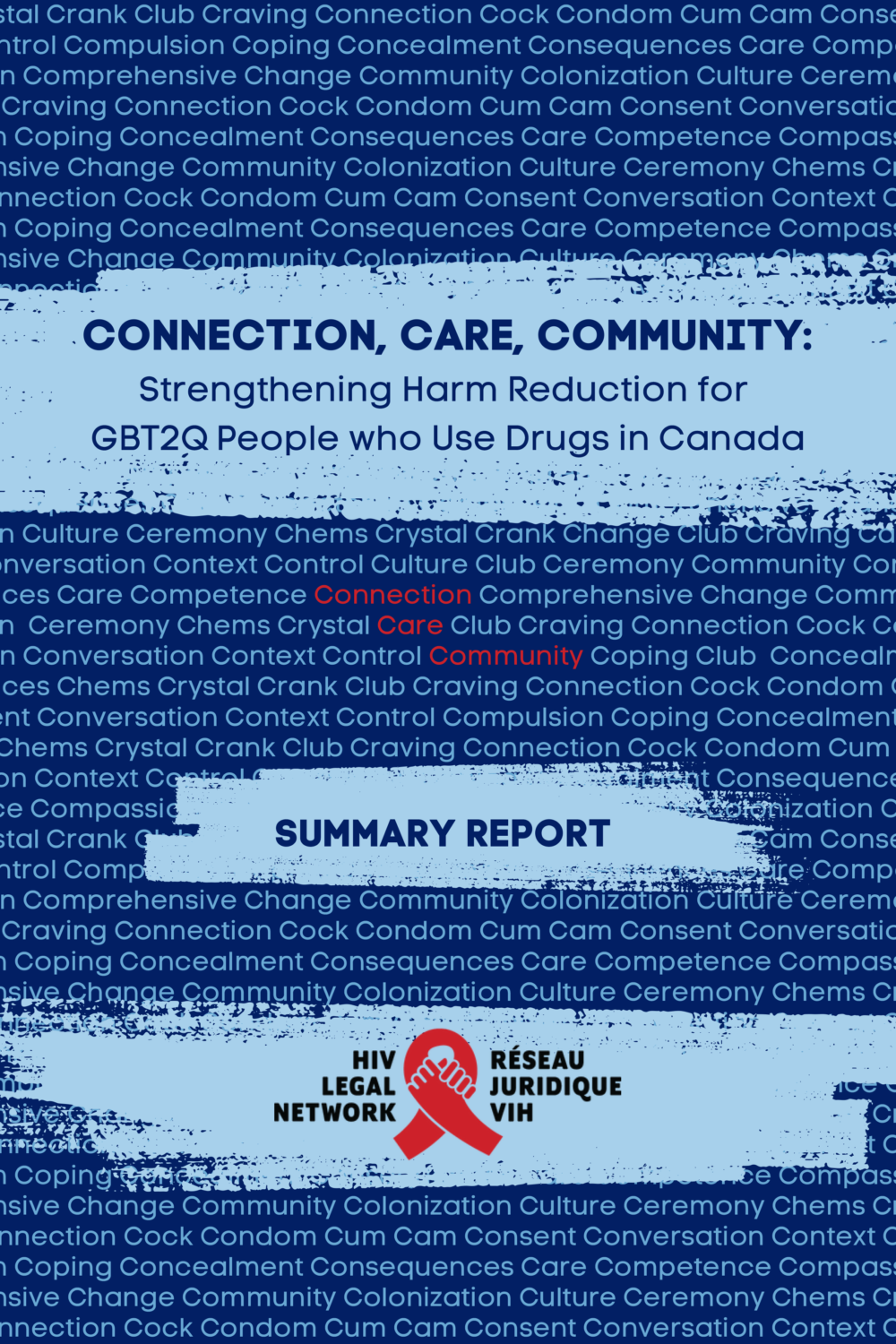The use of both legal and criminalized substances plays a significant role in the lives of many gay, bisexual, trans and/or queer men, and other men who have sex with men, as well as Two-Spirit and non-binary people (“GBT2Q people”). This role can be both positive and negative. There is ample evidence that, for various reasons, GBT2Q people have higher rates of substance use, including problematic use. Similarly, at the population level, the types and patterns of drug use are different for GBT2Q people than for the population as a whole, and many GBT2Q people have particular relationships with substances and patterns of use that are intertwined with social and sexual identities, networks, and behaviours. This has implications for reducing the harms sometimes associated with substance use, and preventing and treating problematic use, among GBT2Q people.
In Canada, gay, bisexual, and other men who have sex with men (GBMSM) have long been, and remain, the single largest “key population” represented among people living with HIV, and people who inject drugs (and who are not identified as GBMSM) represent the third largest.[1] As a population, men who both have sex with men and use drugs face heightened risk of HIV, hepatitis C virus (HCV), and other sexually transmitted or bloodborne infections (STBBIs),[2] as well as other harms sometimes associated with substance use. Meanwhile, both GBT2Q people and people who use drugs face barriers to healthcare, including harm reduction services and services for preventing and treating problematic substance use. The intersection of these two identities means that GBT2Q people who use drugs have particular needs and face additional barriers. Differences in relation to HIV status, gender identity, Indigeneity, race, ethnicity, age, ability, level of education, socio-economic status, involvement in sex work, current or previous incarceration, and more play a role in shaping one’s sexual identity and behaviour, use of substances, and access to health and other services.
Despite this, until recently there has been limited research into the health needs of GBT2Q people who use drugs. Less than a decade ago, Rainbow Health Ontario and the Canadian Harm Reduction Network jointly observed that “Canadian data is solely lacking on 2SLGBTQ+ substance use, associated risks, and harm reduction.”[3] Encouragingly, there has been a significant increase over the past decade in research into drug use among GBT2Q people and related health concerns, and important initiatives to create information and services. Much of the research that does exist is driven by a concern about HIV and other STBBIs, particularly among GBMSM who use drugs. In particular, the topic of sexualized drug use — including the sub-category known as “chemsex” or “party and play” (PnP) — has attracted attention. More data and discussion has helped spur new initiatives and programs to address problematic chemsex. But the response is still in its early stages. There are still many gaps in the research, relatively few programs specifically for this population, and ongoing barriers to the services that do exist. Equitable access to needed programs — both for the prevention of HIV and other STBBIs specifically and for the protection and promotion of health more generally — is a matter of ongoing public health and human rights concern.
